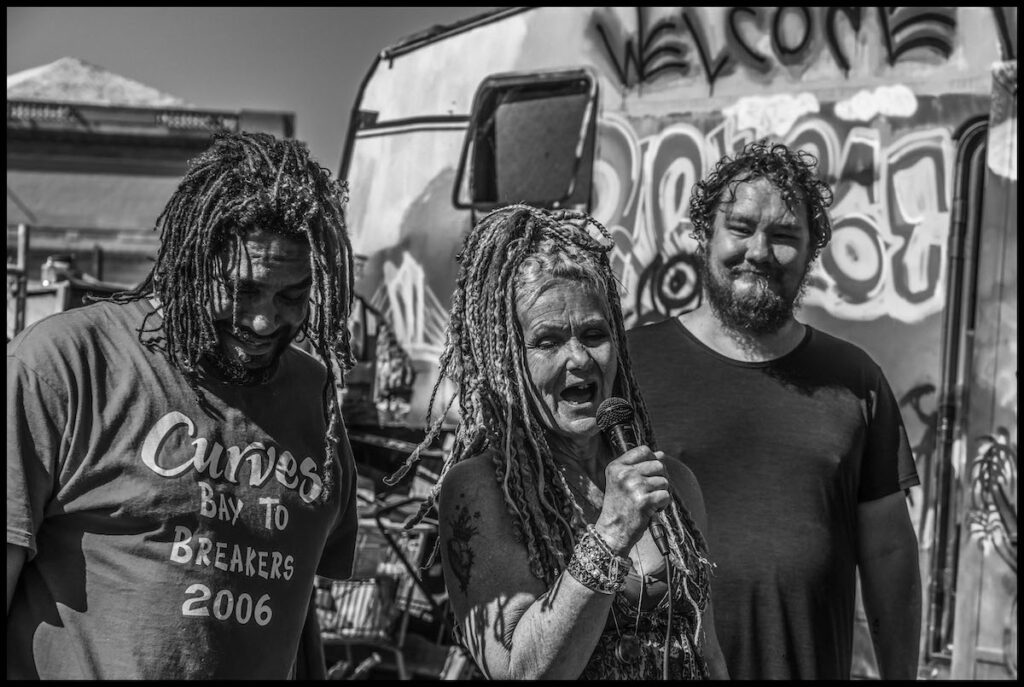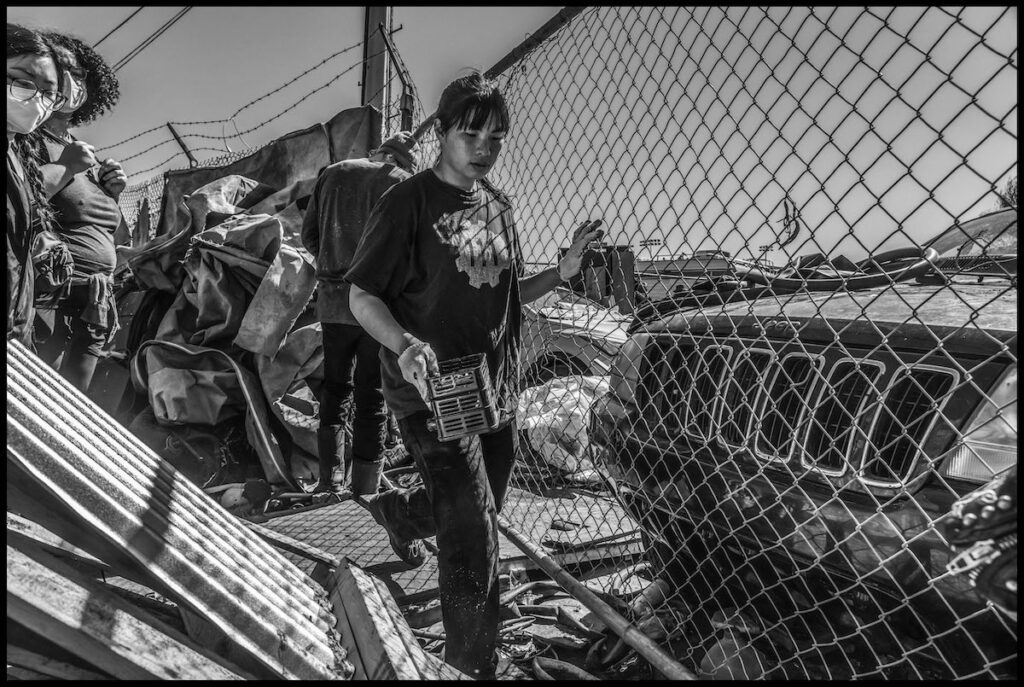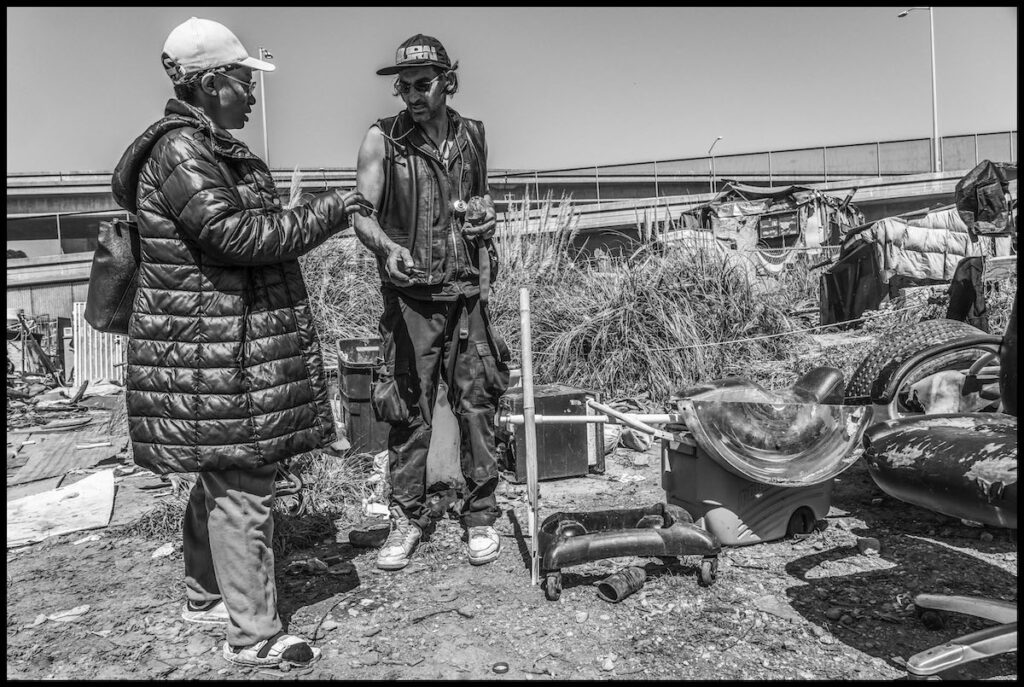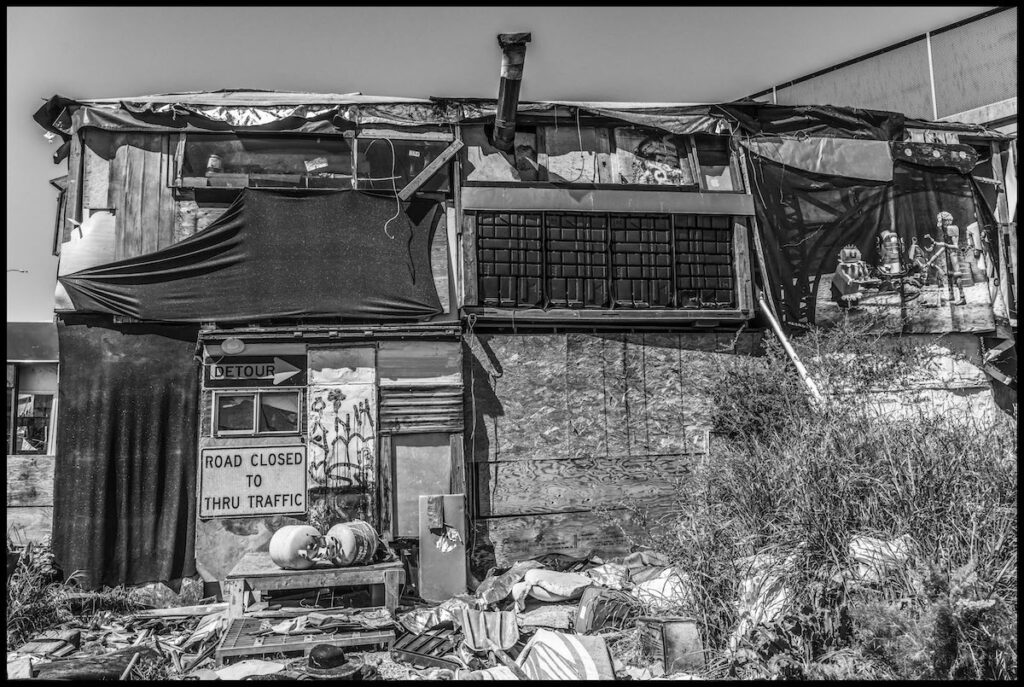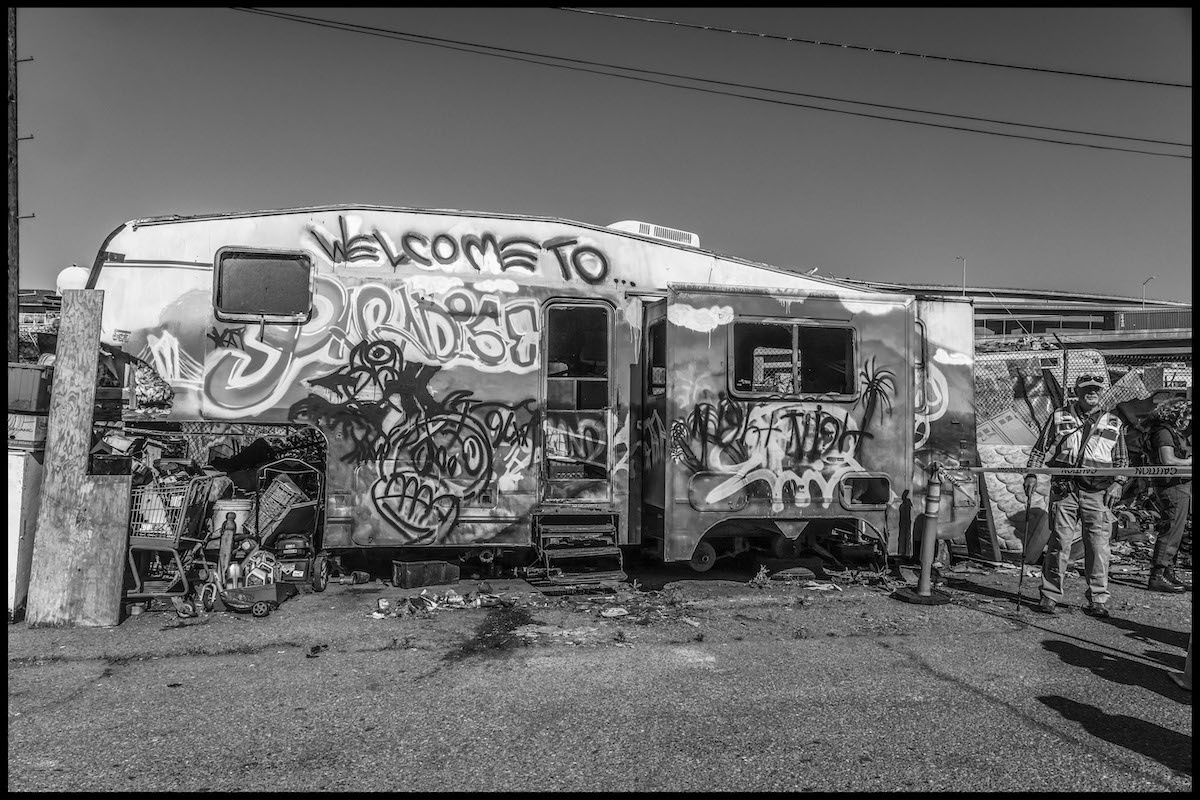On April 10, the City of Oakland evicted dozens of residents from the Wood Street Commons, the last remnant of a once-sprawling homeless encampment on the city’s west side. The evictions come as construction begins on a new housing development in the area. Residents say they are left with few belongings and nowhere left to turn. (Above: “Welcome to Paradise” was painted by residents of Wood Street Commons on a trailer just outside the entrance to the encampment of unhoused people. Photo © David Bacon, used by permission.)
When I walked into Wood Street Commons a week ago, it felt like the end of a long road was drawing near. Outside the two blocks in West Oakland, between old Wood Street and the freeway maze leading to the Bay Bridge, were police, earth movers and garbage trucks. Federal Judge William Orrick had withdrawn the restraining order that protected the encampment, and in two weeks it would be gone.
Inside some of the 60 residents were doing their best to collect whatever was most important to them. How they would get it all out of the encampment’s chaos, and then where they could take it, no one seemed to know for sure. David Meslin, the Ethiopian immigrant who’d fixed bicycles there for eight years, was busy hauling out bike frames. Tariq seemed to be taking items at random from one spot to another, clearing a way for a truck to come pick them up. He didn’t know when, or even who, that might be. Tommygun’s two story house was sure to be lost. He thought he’d lose everything, he told me.
“Many of us are here because when the cops moved us out of the other places where we were sleeping, they told us to come here,” said Jon Sullivan, a Laney College student and unhoused activist. He pointed out that Alameda County still has a moratorium on evictions, that somehow doesn’t apply to people in the Commons. “We obviously don’t have the same legal rights renters do.”
The Commons’ support network of young activists came out in force. Some yelled at the cops, but it seemed obvious who the enemy was. Across the street, and then on for blocks, spread the townhouses of West Oakland’s redevelopment. That wave of demolition and reconstruction had finally arrived at the borders of what for ten years was the city’s largest homeless encampment.
Already the 17 blocks under the freeway maze, where 300 people lived, had been transformed from a field of tents and RVs into bare dirt. Now that redevelopment wave was here to sweep what was left aside. Oakland may get some affordable housing built where the Commons has been, but the people who have lived here, with no money, will likely never live there. The city has some tuff sheds, with a 90-day limit on how long anyone can stay. After that, as one resident told me, “I guess I’ll be back on the streets.”

